5 Trends on the beef market in China in 2024. Exclusive content based on the ground , experience of F&B experts of GMA.
Need a cost effective TP (Tmall Partner) to sell in China?
We are an Official Tmall Partner e-commerce Agency. Our Services: E-Commerce, Search Engine Optimization, Advertising, Weibo, WeChat, WeChat Store & PR.
- Rising Demand for Imported Beef: China has been experiencing a growing appetite for high-quality imported beef. This trend is driven by increasing disposable incomes, urbanization, and changing dietary preferences. Top Countries like Australia, Brazil, and the United States have been major suppliers of beef to the Chinese market.
- E-commerce and Online Sales: The beef market in China has seen a surge in online sales, particularly through e-commerce platforms like JD.com and Alibaba’s Tmall. Consumers increasingly prefer the convenience of ordering beef products online, including fresh and frozen cuts, as well as specialty items.
- Healthy and Premium Beef Options: Health-conscious consumers are seeking leaner and healthier beef options, leading to increased demand for grass-fed, organic, and hormone-free beef. Premium cuts and specialty beef products, such as Wagyu and Angus beef, have also gained popularity among Chinese consumers.
- Food Safety and Traceability: Food safety and traceability have become significant concerns in China. Consumers are increasingly looking for assurances regarding the safety and origin of their beef products. As a result, companies are investing in traceability systems and certifications to build trust with consumers.
- Plant-Based Alternatives: While not directly impacting traditional beef consumption, the rise of plant-based meat alternatives has been a notable trend globally. Some Chinese consumers are exploring these alternatives for environmental, health, or ethical reasons. This trend may influence the overall protein market in the long run.
Branding in China …. is everything for the consumers
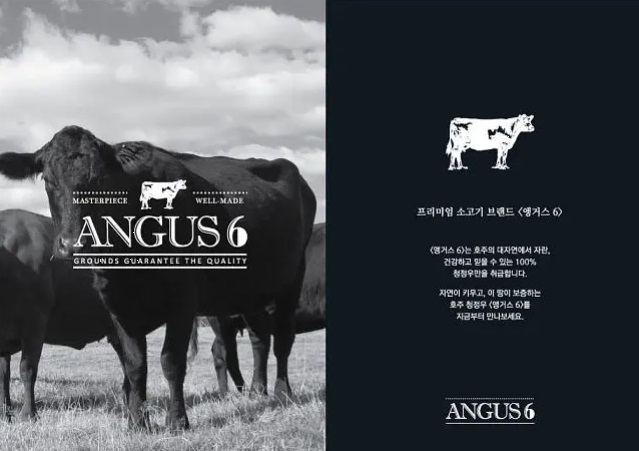
Chinese consumers often seek labels and brands that provide them with trust, quality assurance, and specific attributes in beef products. Here are five key points related to labeling and branding in the Chinese beef market:
- Origin and Authenticity: Chinese consumers value labels and brands that clearly indicate the origin of beef products. Labels that specify the source country or region, such as “Australian Grass-Fed Beef” or “Argentinian Beef,” can instill confidence in the product’s authenticity and quality.
- Certifications and Standards: Brands that display certifications related to food safety, organic production, or animal welfare, recognized both locally and internationally, are highly regarded. These certifications serve as a mark of quality and compliance with standards.
- Traceability and Transparency: Brands that offer transparency in their supply chain and production process are appreciated. Providing information on the entire journey of the beef, from farm to table, enhances consumer trust. QR codes or blockchain technology for traceability can be valuable.
- Premium and Specialty Labels: Chinese consumers are willing to pay a premium for specialty beef products. Brands that offer premium cuts, such as Wagyu or Angus beef, or emphasize unique attributes like marbling, tenderness, or aging processes, are appealing to those seeking high-quality options.
- Sustainability and Ethical Practices: Brands that promote sustainable and ethical practices in beef production resonate with consumers who are environmentally and socially conscious. Labels indicating sustainable farming methods, humane treatment of animals, and eco-friendly packaging can attract a loyal customer base.
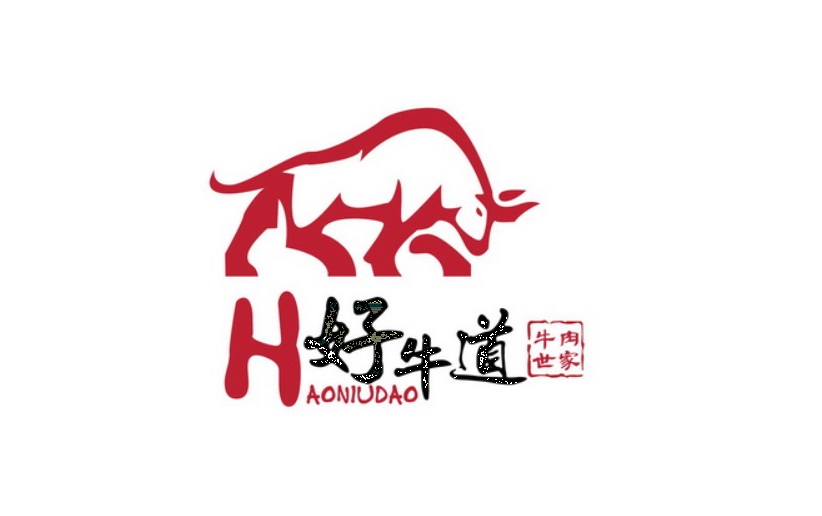
How to launch a Launching a Beef brand in China ?
Launching a food brand in China is a journey filled with opportunities and challenges. To succeed in this dynamic market, it’s crucial to keep these five key principles in mind:
1. Market Research and Localization: Know China’s Flavor, Be China’s Favorite!
Conduct thorough market research to understand the diverse culinary preferences across China. Tailor your products to cater to local tastes and traditions. By doing so, you can become a household name and earn a spot in every Chinese kitchen.
2. Regulatory Compliance and Quality Assurance: From Farm to Fork, Safety is Our Forte!
China’s food safety regulations are stringent, and rightfully so. Ensure your brand complies with all the necessary regulations and standards. Prioritize quality control to build trust with Chinese consumers, assuring them that your products are safe and reliable.
3. Establish an Online Presence: E-commerce Excellence: Where We Serve Your Plate!
Embrace the digital era by partnering with renowned e-commerce platforms like Tmall, JD.com, or Alibaba. With just a click, you can reach millions of Chinese consumers eager to explore new culinary experiences. Your brand’s online presence is the gateway to their plates.
4. Build Trust and Transparency: Our Ingredients, Your Confidence.
Transparency is key in the Chinese food market. From sourcing to production processes, communicate openly with consumers. Highlight internationally recognized certifications for food safety and quality on your packaging and marketing materials to earn their confidence.
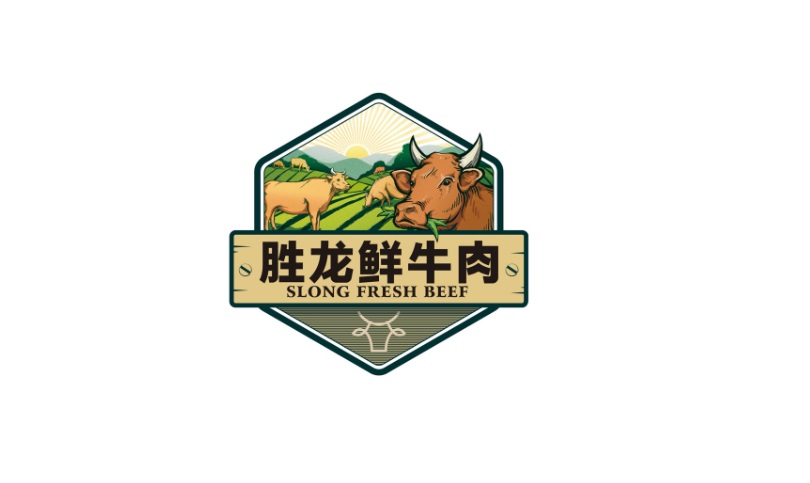
5. Collaborate with Local Influencers and Partners: Flavors Unite, Influence Ignites.
Leverage the power of collaboration. Partner with local distributors, restaurants, and retailers to expand your reach and distribution network. Additionally, team up with Chinese influencers and key opinion leaders (KOLs) in the food and lifestyle niche to create a culinary sensation that’s hard to resist.
Wagyu Beef communication on Social media like Little Red book
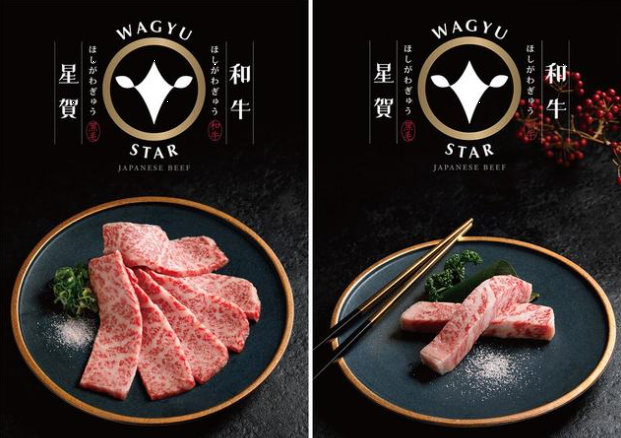
In conclusion, launching a food brand in China is about understanding local tastes, complying with regulations, embracing e-commerce, promoting transparency, and forming strong partnerships. Remember these principles, and your brand can rise to the top of the Chinese culinary scene, becoming a favorite among Chinese consumers.
[et_pb_section fb_built=”1″ _builder_version=”3.0.47″][et_pb_row _builder_version=”3.0.48″ background_size=”initial” background_position=”top_left” background_repeat=”repeat”][et_pb_column type=”4_4″ _builder_version=”3.0.47″ parallax=”off” parallax_method=”on”][et_pb_text _builder_version=”3.0.87″ border_style=”solid”]Total beef consumption in China in 2018 is estimated at 8.5 million metric tons, second only to the U.S., according to the USDA Foreign Agricultural Service. With the development of China’s economy and the improvement of living standards, the demand for beef in China is rising. In response to the growing beef consumption, China is importing more beef. From 2013 to 2017, the beef output volume in China grew from 6,130,900 tons to 6,346,200 tons at a CAGR of only 0.9%, while the beef imports grew at a CAGR of nearly 24%.
Beef consumption in China is low but rising. Despite being a major beef producing and consuming country for many years, China never participated much in global beef markets until recently.
[/et_pb_text][et_pb_code admin_label=”CTA – Article” _builder_version=”3.0.62″ custom_css_main_element=”border: 1px solid #e6edf3;||padding: 22px 30px 32px;||margin: 30px 0;||position: relative;||border-radius: 5px;||background-color: #f9f9f9;” global_module=”37155″ saved_tabs=”all”]Marketing to China it’s also an Agency
We are the top and most visible Web & Marketing Agency for China you will find on the web. Our Services: E-Commerce, Search Engine Optimization, Advertising, Weibo, WeChat, WeChat Store & PR.
Contact us Today[/et_pb_code][et_pb_text _builder_version=”3.0.74″ background_size=”initial” background_position=”top_left” background_repeat=”repeat”]China needs to feed 22% of world’s population with of 7% of its agriculture resources and 6% of its water resources. China’s total beef and veal consumption have increased to seven million tonnes in 2015 and is expected to upsurge to around eight million tonnes in 2020, according to Euromonitor.
Market Analysis
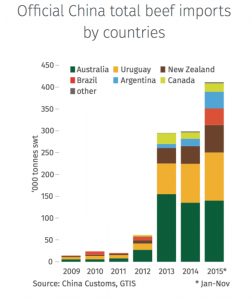
The Chinese government’s policies on beef import include restrictions and incentives. In order to, control epidemics and support the domestic beef industry, the Chinese government bans the import of cattle and cattle products from high-risk countries and regions.
However, The Chinese government signs trade agreements with some countries to cut the tariffs on beef imports and increase the beef supply in China. Only the countries and regions included in China Customs’ List of Meat Eligible for Export to China from Countries or Regions that Meet the Requirements of Assessment and Review can export beef to China. China’s beef imports mainly come from Brazil, Australia, Uruguay, New Zealand and Argentina. In 2017, the five countries contributed more than 90% of both the import value and import volume of beef in China.
The E-commerce is the most suitable to reach Chinese consumers

In a report by China’s Animal Protein Outlook the analyst, Blake Holgate states that “E-commerce is the fastest growing retail channel in China, with online sales growth forecast to increase by 20 per cent out to 2020, compared to just six per cent for traditional retail,”.
It is important for international brands aspiring to roll out businesses in China that they gain benefit of E-commerce distribution channels in China. E-commerce gives access to reach medium and high income consumers.
E-commerce is playing a vital role especially in grocery and food with respect to imported beef meat. The usage and adaptability of e-commerce channels is growing at a rapid pace due to its convenience, trust and social experience. E-commerce has accounted for around 25% of total retail sales in 2018 and is projected to continue to grow to around 30% in 2019. Since 2011, online retail sales have almost doubled each year. In 2018, more than 40% of total online sales were imported goods.
Branding for Imported Beef in China is the right first step!
Beef is really sensitive to quality and safety. Chinese people like to be certain about the quality of the product before buying it. Imported Beef is extremely popular in Chinese cuisines and westernised cuisines in China. The company needs to build e-reputation in order to gain popularity among customers. The marketing campaign must address the need of customers. It is highly important for International companies to understand the local culture and demands before it translates its offerings. Therefore, when approaching China’s E-commerce, it is advisable to partner with local digital agency as it is equipped with right set of skills to find a “sweet spot” between the International brand value and preference of Chinese consumers.
Imported Meat, specially Beef is sold well on Chinese E-Commerce
Demand of Imported Beef on TMALL
![]()
TMALL holds the biggest market share in e-commerce market of China at 59.5%. It mainly focuses on premium brands. This characteristic makes TMALL most expensive e-commerce marketplace in China. It provides an opportunity to International brands to open exclusive online stores and directly sell products to Chinese consumers without being physically present in China.
TMALL has invitation-only policy where only qualified international brands can either be invited to join or can apply through a local digital marketing agency. For more information on how to sell International products through TMALL, please contact digital marketing agency.
Meeting Demand of Imported Beef on JD.com
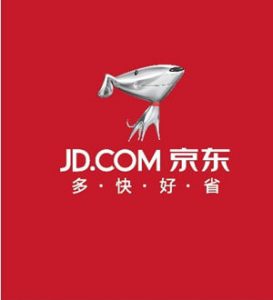
JD.com is China’s largest online direct sales company(25.8%). It relatively has less market share than TMALL.com. International companies can open individual online stores on JD.com. JD’s cross-border service enables suppliers to sell directly to Chinese consumers without a local presence.JD.com is less expensive than TMALL. JD.com has a zero tolerance policy for counterfeit products.
Demand of Imported Beef on Haitao Web Interface?
There are several cross- border websites that cater international brands. Chinese consumers prefer buying imported products from Haitao websites. To learn about which Haitao is suitable for you brand please contact local marketing agency catering International brands.
Demand of Imported Beef on Taobao

Taobao is owned by Alibaba Group. It offers largest C2C e-commerce marketplace in China. Taobao allows registered or non-registered businesses to sell directly to consumers. Establishing a store on Taobao is virtually free but the online marketplace is ruled by small sole sellers who compete fiercely on price and honesty and authenticity is an unwritten rule of their trade ethics. Sellers with low budget and low quality products opt for this platform.
Imported Beef in China on WeChat Store
 WeChat takes part in lifestyles of Chinese consumers. It is all-in-one-app which integrates social e-commerce seamlessly. Wechat store gives numerous possibilities to International brands to reach Chinese consumers effectively. Possibilities ranges from Branding to campaigning and easy payment methods.
WeChat takes part in lifestyles of Chinese consumers. It is all-in-one-app which integrates social e-commerce seamlessly. Wechat store gives numerous possibilities to International brands to reach Chinese consumers effectively. Possibilities ranges from Branding to campaigning and easy payment methods.
WeChat Service Account is considered the most suitable for business and organization that aspires to access advanced WeChat Official Account. Service accounts allow more APIs (Minisite) and companies are can open their own store. The online store can be used to manage products, take orders, display products, and manage customer complaints. For more information on how to manage Wechat store, international companies are advised to partner with expert Digital Marketing Agency, willing to apply for an Official WeChat Account on behalf of the international company.
Are you interested in selling Imported Beef in China’s E-commerce market, and learn how you can target Chinese consumers digitally? You are welcome to call us for a friendly discussion and learn about your brand’s prospects in Chinese E-commerce market. Our Digital Marketing agency provides, international brands with tools that are optimal to unlock this enormous market to earn their full potential. If you are interested in exploring Chinese Digital E-Commerce platforms, reach out to us for a customised advice.
[/et_pb_text][/et_pb_column][/et_pb_row][/et_pb_section]






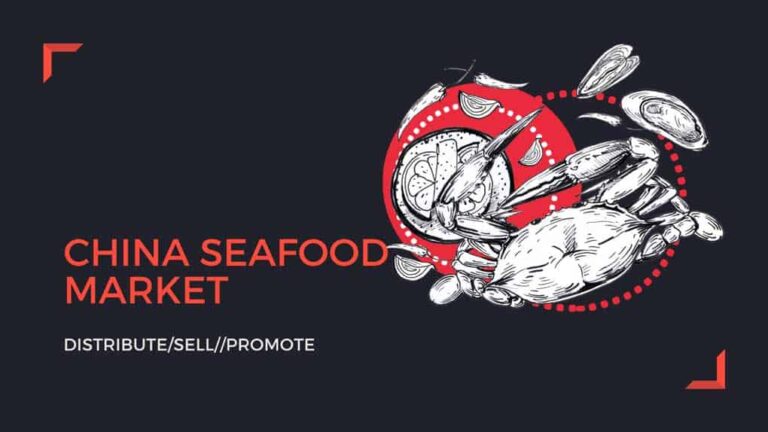

Hello
We are a Chinese distribution & import company, and we would like this year to distribute a beef brand from Europe, australia or north america to China.
contact me if you are serious
Hello!
I am interested. How can I get in touch with you?
Hey, cool post and amazing website eccomerce China
You can check if there’s a problem with your website with Internet Explorer. Because of this issue, many readers will overlook your excellent writing
Hello, I did not notice a problem with IE